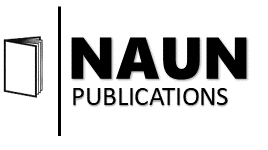Theoretical Analysis of Coupled Modified Hindmarsh-rose Model Under Transcranial Magnetic-acoustic Electrical Stimulation
Authors: Liang Guo, Shuai Zhang, Jiankang Wu, Xinyu Gao, Mingkang Zhao, Guizhi Xu
Abstract: Transcranial magnetic-acoustic electrical stimulation (TMAES) is a new technology with ultrasonic waves and a static magnetic field to generate an electric current in nerve tissues to modulate neuronal firing activities. The existing neuron models only simulate a single neuron, and there are few studies on coupled neurons models about TMAES. Most of the neurons in the cerebral cortex are not isolated but are coupled to each other. It is necessary to study the information transmission of coupled neurons. The types of neuron coupled synapses include electrical synapse and chemical synapse. A neuron model without considering chemical synapses is not comprehensive. Here, we modified the Hindmarsh-Rose (HR) model to simulate the smallest nervous system—two neurons coupled electrical synapses and chemical synapses under TMAES. And the environmental variables describing the synaptic coupling between two neurons and the nonlinearity of the nervous system are also taken into account. The firing behavior of the nervous system can be modulated by changing the intensity or the modulation frequency. The results show that within a certain range of parameters, the discharge frequency of coupled neurons could be increased by altering the modulation frequency, and intensity of stimulation, modulating the excitability of neurons, reducing the response time of chemical postsynaptic neurons, and accelerating the information transferring. Moreover, the discharge frequency of neurons was selective to stimulus parameters. These results demonstrate the possible theoretical regulatory mechanism of the neurons' firing frequency characteristics by TMAES. The study establishes the foundation for large-scale neural network modeling and can be taken as the theoretical basis for TMAES experimental and clinical application.
Pages: 610-617
DOI: 10.46300/9106.2022.16.76
International Journal of Circuits, Systems and Signal Processing, E-ISSN: 1998-4464, Volume 16, 2022, Art. #76
PDF DOI XML
Certification
